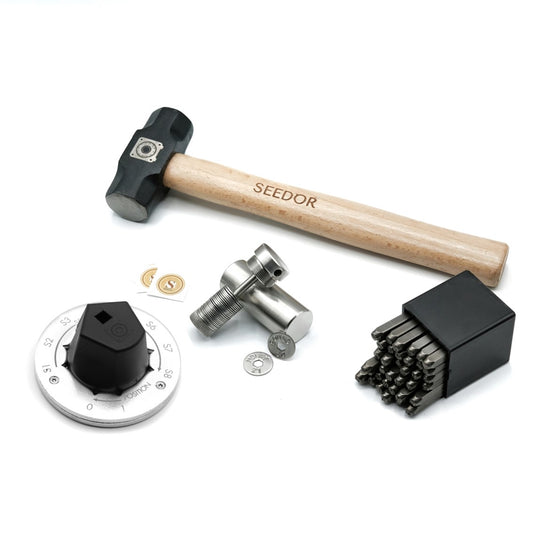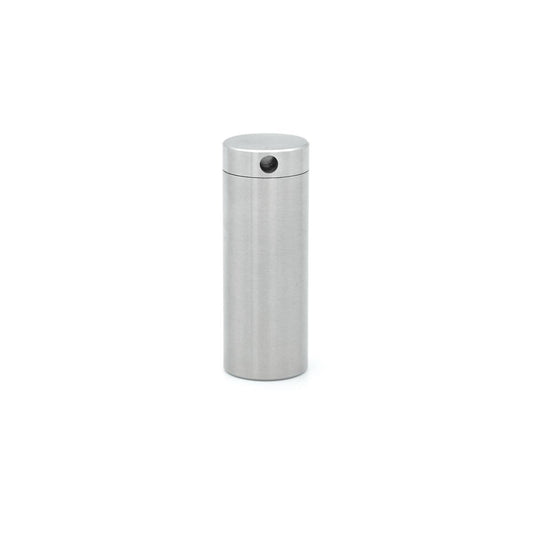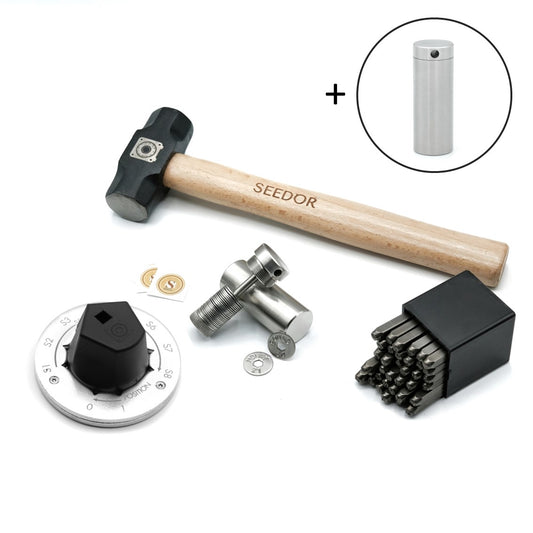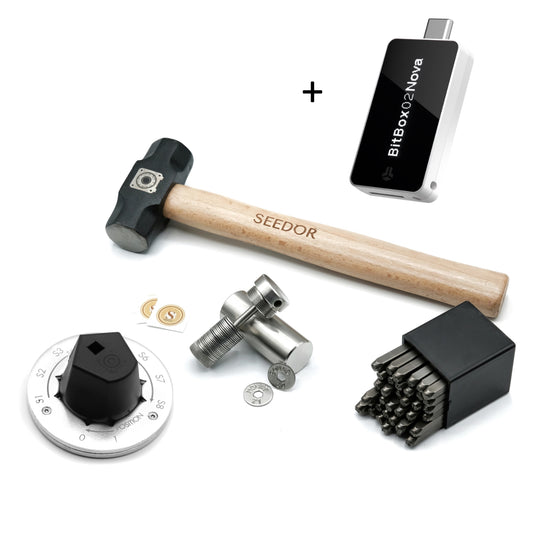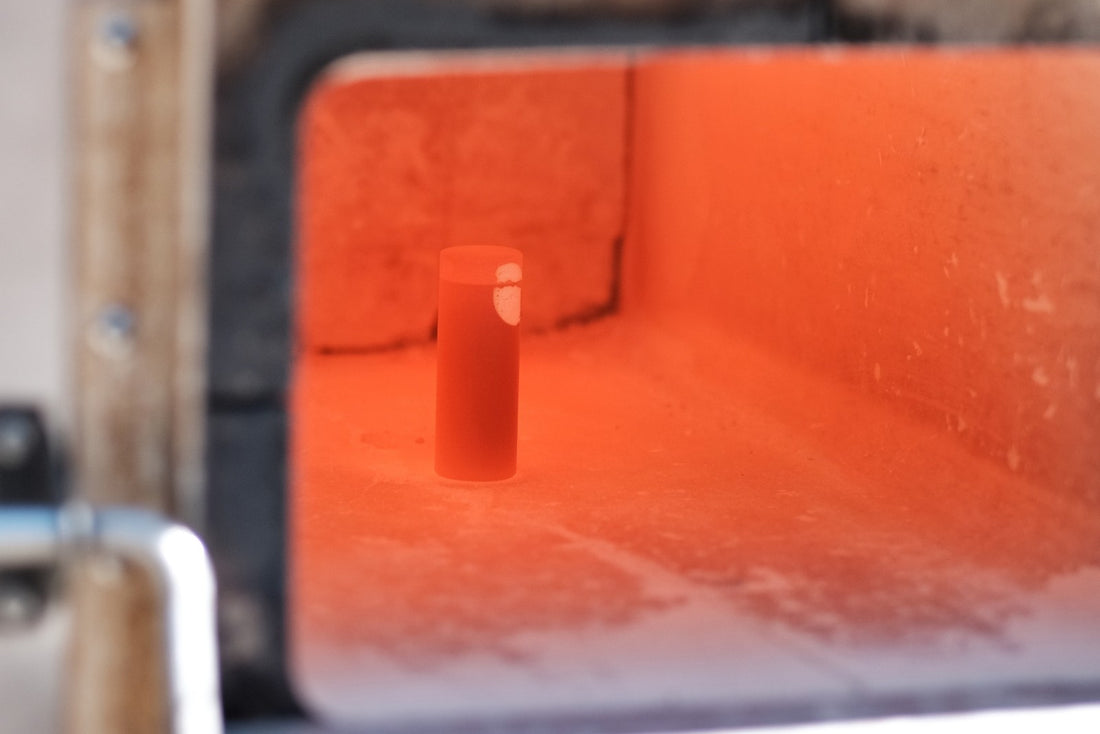
Bitcoin Steel Wallet Stresstest - what can the Seedor Safe withstand?
Ayhan CelebiShare
The Seedor Safe is made of EN ISO 9001 certified stainless steel type 1.4404 (V4A, 316L) (Until 09.2022 made of 1.4301 (V2A steel). According to the data sheet, the material is corrosion and acid resistant, has a melting point of about 1,400 °Celsius (the unit of temperature not the Sh*tcoin 😊) and a tensile strength of 500-700 N/mm². The Bitcoin or rather the recovery seed to your private keys stored in the Seedor Safe are thus, at least in theory, pretty much prepared for all adversities. But as the saying goes: "never trust, verify". That's why we were recently guests at the Technical University of Kaiserslautern and put our safe through its paces in the materials testing lab there, pushing it to its limits.
1. Temperature / fire resistance ✅
In a house fire, the temperature rises with increasing fire duration. After 30 minutes, the fire reaches about 850 °C, after 90 minutes about 1,000 °C before reaching a maximum temperature of 1,100 °C after about 180 minutes. To simulate the expected thermal exposure in the event of a house fire, we placed the Seedor Safe including the embossed recovery seed on the discs in a muffle furnace. The oven was heated to nearly 1,100 °C and the safe was heated to full glow for 60 minutes.

After an hour at over 1,000 °C, the safe was allowed to leave the blazing hell. At first, the new color scheme was noticeable - the safe in black doesn't look bad at all. Maybe this would be something for a limited special edition?

After cooling down, the safe could be unscrewed without any problems. Both threads are fully intact, so that a non-destructive access to the discs is possible without any problems. And now the most important thing: the embossed discs survived the fire without damage. The embossed seed phrase is in perfect condition and can be read without any problems. Test passed!
In 2023 we repeated this test with the Seedor Safe made from 316L steel and this time we even went as high as 1350°C.
2. Compressive strength / mechanical stress ✅
If you're honest, it takes a bit of imagination to think of a realistic case where the Seedor Safe would have to withstand mechanical stress in real life. Perhaps a collapsed house after an earthquake?

So be it. We did the test and loaded the safe with the help of a hydraulic press. In the force-controlled test, the load was increased to an incredible 94.2 kN until the safe failed. This corresponds to a load with a weight of 21,164 lbs - from our point of view definitely impressive for such a small capsule. If in doubt, you could drive 7 Lamborghini Huracáns over the capsule at the same time without damaging the safe, although this load case is rather hypothetical at the current Bitcoin price and due to the fact that real Bitcoiners do not drive Lambos.

What surprised us positively was the fact that even after the failure of the material, the capsule could be opened non-destructively, guaranteeing easy access to the recovery seed even under mechanical stress. In the Bitcoin Seed Storage Stress Test by Jameson Lopp, some of the Steel Wallets failed at this point.
3. Acid or corrosion resistance ✅
Corrosion is probably the most realistic threat to a Bitcoin Steel Wallet in the long run. If individual components are made of different alloys, it is possible that a small-scale corrosion element (local element) will form depending on the environmental parameters, the stainless steel will be eaten away over a long period of time, and the stored recovery seed will lose its readability as a result.
To avoid this threat, all elements of the Seedor safe are made of exactly the same stainless steel alloy. Since corrosion is a very lengthy process, exposure to highly concentrated acid is a good way to assess the corrosion tendency even in a short period of time. We placed our safe in a bath of concentrated hydrochloric acid for this purpose.

In case anyone is wondering about the coloration - we had also placed a piece of concrete in the solution alongside the safe to show that it was indeed hydrochloric acid (and not water). The test did not detect any reaction of the stainless steel with the acid, which can ultimately be used as an indication of long-term corrosion resistance.
Conclusion:
From our point of view, our safe actually passed the tests with flying colors. Even if it is not very likely in reality that the described load cases will occur in the tested form and the safe will have to ever make use of its properties, it is a comforting feeling to know that your seed phrase hase found a safe and potentially generation-spanning home.

